George MacDonald and the Quest for Scottish Oatcakes
Disclosure: This post contains affiliate links which won’t change your price.
Three years ago, I interviewed Michael Phillips about his lifework of reintroducing George MacDonald’s writings to the world. Naturally, thinking and writing on the topic made me homesick for the familiar stories, and so I began to reread.
While curled up in my Jerusalem home, vicariously roaming the hills of Scotland, I noticed that everyone seemed to be eating oatcakes.
Feeling a little jealous and a little hungry, back I went to my online hunt, this time for an oatcake recipe. What I found was this recipe, which I adapted and still frequently use today. (Later, I would learn that they are very like Nova Scotia oatcakes, and so that’s what I have named them.)
In Jerusalem, I used to make these hearty, nutty, a-little-crisp-a-little-sweet oatcakes every week. They stayed stashed in my freezer, coming out for snacks — or to be tucked into my backpack for day trips, sustaining me as I hopped bus, train and taxi across town in the rainy winter weather. Now I make them for my younger brother, who enjoys them as a butterier, less sugary alternative to store-bought granola bars. He’s packed them while working in the deep-freeze warehouse, and on blisteringly-hot pavement repairs. Sometimes I snitch a few when I have a guest for tea.
Elisabeth's Nova Scotia Style Oatcakes
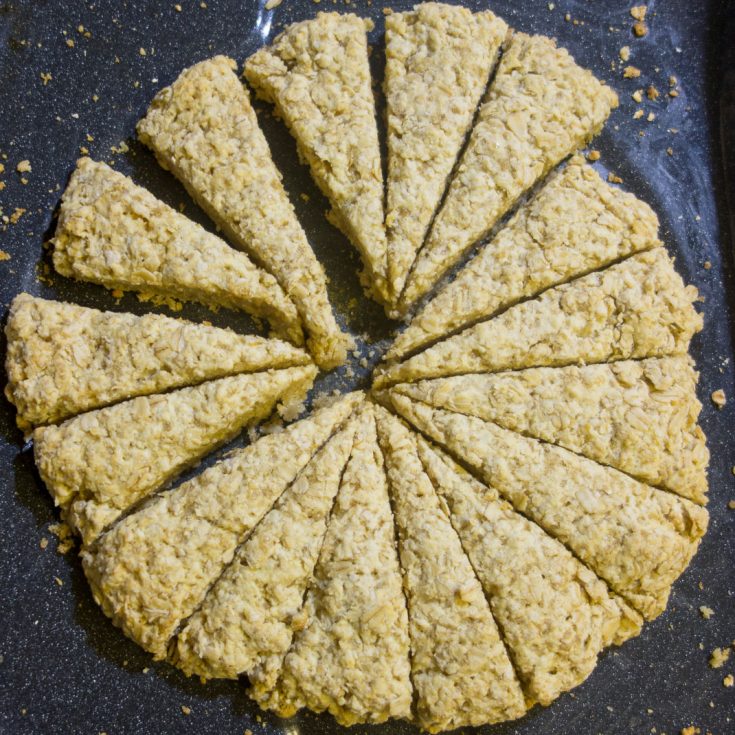
Ingredients
Instructions
In 2018, Michael Phillips began republishing the entire corpus of George MacDonald’s work, and as I updated my original interview with him to reflect this fact, I fell down another rabbit hole. Only this time, I wondered what an authentic oatcake meant, and I turned back to MacDonald’s novels for clues.
Searching the novels available online (especially at Project Gutenberg), I discovered that oatcakes (or oat-cakes) appear in: Sir Gibbie, David Elginbrod, Heather and Snow, Malcolm, Donal Grant, Salted with Fire, What’s Mine’s Mine, Castle Warlock, Ranald Bannerman’s Boyhood, Alec Forbes of Howglen, and Robert Falconer.
Though he gave hardly any clues about their ingredients, MacDonald had much, much more to say about how and where they were served.
Oatcakes appeared at breakfast.
While camping in a cave-like retreat in the mountains, Alister and Ian enjoyed porridge, butter, tea, and mutton-ham with their oatcakes. The poverty-stricken family living in the castle at Glenwarlock served their guests oatcakes, tea, scones with jam and butter (and a new-laid egg), while they had porridge and milk, and their servant porridge with treacle (molasses).
Oatcakes could be served for lunch.
Duncan the piper ate his with sowens (a porridge made of fermented oat-husk starch). When Alec Forbes spent a dreamy morning outside reading aloud to Kate:
At noon, Mrs Forbes sent them a dish of curds, and a great jug of cream, with oatcakes, and butter soft from the churn; and the rippling shadow of the birch played over the white curds and the golden butter as they ate.
Oatcakes seemed frequently to be served at afternoon tea.
At the home of Blue Peter the fisherman, for example. Robert Falconer found them on the doctor’s table along with white bread and other delicacies, while at his grandmother’s, they were “well loaded with the sweetest butter.”
They could form a hasty supper…
…along with potatoes and milk, or a nighttime snack, again with a tumbler of milk.
They could even form part of a village wedding.
After the church ceremony, Malcolm was present as the bride was greeted at the doorway of her childhood home by her mother, who broke a quarter of oatcake over her handkerchief-covered head. The pieces were given to guests to put under their pillows that night.
Oatcakes were hospitality, in humble and in wealthy homes.
As a little waif, Sir Gibbie was welcomed by a poor woman in a remote mountain cottage. From their storage place (a hollow in the wall), she took a platter of oatcakes, serving them with rich milk in a wooden bowl. Ranald Bannerman found the same fare at the home of the laird, only this platter of oatcakes was stored within a press (a closet or cupboard) in large and vaulted kitchen.
Finally, these sturdy cakes traveled very well.
While traveling on foot, Donal Grant carried them in a wallet with hard skim milk cheese. In Salted with Fire, Maggie’s father urged her to take several pieces of oatcake in case she got hungry on a long journey by cart. He took the same in his pocket while hiking on the hills. On market day, James Dow refused to waste money buying food in the tents, taking some oatcakes in a pouch instead. When college-bound, Donal even found them packed in his travel chest, along with oatmeal, cheeses, butter, and jam. (This appears in the book about his friend, Sir Gibbie.)
I did find three clues: Unlike my scone-adjacent or Michael’s cracker-like variations, these oatcakes were sometimes described as thick, and sometimes as quartered. Ordinarily made with water, they could be made more luxurious with cream instead.
After further online research, I learned that there are several regional varieties of oatcakes. Those made in the lowlands of Scotland, for example, contain flour. And as time went on, the Canadians developed their own style, which included sugar. But honestly, the oatcakes historically made in the highlands of Scotland did not sound very appetizing. They did not have sugar, or flour–not necessarily even butter. They were made with just a little fat, possibly lard. And contrary to the ordinary rules of baking tender quick breads, they were made with hot water. (What?)
What I didn’t reckon with was the little fact of Scottish oats. American rolled oats are already steamed and pressed, making them a little bland, a little cardboard-like, and more than a little gooey. Steel cut oats (the closest American equivalent) is nutty-tasting, with a good, firm chew–not at all to be ruined by a little hot water. But I didn’t know that — until last week.
I nearly didn’t buy my first carton of steel-cut oats (the closest American equivalent), but I’m so glad I did. To my surprise, I discovered that more butter, rolling more thinly, and flipping them during baking (almost like biscotti) are not the only, or even the best ways to the crisp and flavorful oatcakes I was looking for.
Ground into flour, steel cut oats more than hold their ground in the utter simplicity of this authentic Scottish recipe. I decided to let my scones stay their own sweeter, softer selves, and enjoy these sturdier, humbler, more filling oatcakes with the thickly spread butter MacDonald described–with, perhaps, lots of cold whole milk, and even a little honey or jam.
After my own oatcake epiphany, I learned that Michael Phillips had also gone back to the source:
When Judy and I are in Scotland, we live on oatcakes. There are at least a half-dozen varieties available in most markets, and a dozen in big supermarkets. Though I have been trying for 30 years, however, I have not been successful in replicating any of them. Many include wheat in their recipes and “stabilizers” (whatever they are!) and other ingredients I’ve never heard of.
I’ve come up with a dozen or more recipes through the years, but recently have gone about as basic as you can get. No longer am I trying to imitate what we find on store shelves but instead focusing my efforts on imagining the oatcakes Gibbie and Donal and Cosmo and Malcolm would have carried with them as their food for a day, washed down with water from a mountain stream.
Oatcakes in MacDonald’s books are not “cakes” at all, but what we might call crackers, though thicker and hard—hard-tack made from oats. They are called by various names: Oatcakes or just “cakes,” or girdle cakes (or “griddle cakes” cooked on cast iron on the stove.) I imagine most women in the 19th-century Scottish highlands, however, simply rolled out their dough and baked it whole, from which pieces or quarters were later broken off.
The result of my “basic” recipe will be pretty plain. It is an acquired taste. Judy and I love them and eat them all day long. At least once a week (sometimes oftener) we have what we simply call an “Oatcake Supper” in the evening: Fresh oatcakes, sliced cheese, thin-sliced turkey, mustard and mayo, raspberry jam, strawberry jam, cream cheese, and lemon curd. You get the idea. It’s a feast. One of Judy’s favorites for lunch is three oatcakes with cheese, microwaved, then spread with sugarless ginger jam. Not really my “cup of tea,” but in Scotland it is her lunch every day. And every morning it’s oatcakes and tea!
Once you have the basic recipe down, the sky’s the limit with creative additions. You can vary the three cups of oats any way you like. Oats come in all shapes and sizes: whole rolled oats, quick oats (“porridge oats” in Scotland), Scottish oatmeal (not sold everywhere, but carried by Bob’s Red Mill), oat bran, and oat flour. I have never tried steel cut oats. Which type you use affects the consistency, not the taste. My standard proportions are: You can cook oatcakes on the stovetop. Though it’s more labor intensive and takes longer, the effect is great. Place oatcakes on lightly oiled/buttered cast-iron skillet on low heat. Cook until lightly brown, turning over and flattening occasionally. At lowest heat they can go for three hours and not brown, if the heat is too high they will burn in five minutes. It’s all about experimentation—no two batches are ever the same. I usually cook for an hour or two (turning several times) at the very lowest heat to make sure they are cooked through, then turn it up to brown and crisp, watching carefully not to burn. They need to sit a while—you can’t really tell how they have turned out until the next day. Using butter and brown sugar turns oatcakes into a crunchy oaty cookie. We do our sweet version with coconut sugar, though I have also tried honey and molasses. Warning: adding sweetener drastically reduces baking time and burning becomes all to easy. The liquid can be modified, too. After reading in Robert Falconer about oatcakes made with thick cream, I tried using cream instead of water. Wow—dessert oatcakes! Other variations: Surprisingly, adding flax meal creates a very different and nutty taste. Another favorite of mine is adding lemon zest and a touch of sweetener for lemon oatcakes. Judy likes strongly ginger-flavored oatcakes. You are probably beginning to understand why I call oatcakes an “art form.” When I’m not writing, I exercise my creativity dreaming up new oatcake variations!Mike's Basic Oatcakes
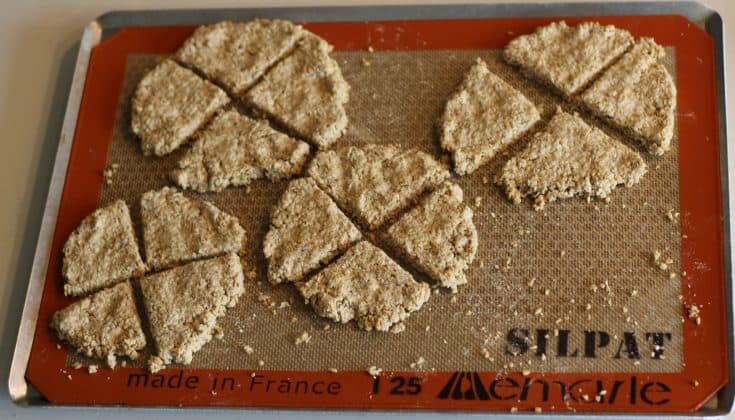
Ingredients
Instructions
Notes
All his life he continued to love the rock from which he had been hewn. All that is best in his novels carries us back to that “kaleyard” [kitchen garden] world of granite and heather, of bleaching greens beside burns that look as if they flowed not with water but with stout, to the thudding of wooden machinery, the oatcakes, the fresh milk, the pride, the poverty, and the passionate love of hard-won learning.
Likewise, my quest for the oatcakes of George MacDonald’s Scotland brought me back to something simple, sustaining, and homey — a picture of hospitality, and even of the daily bread given by the Bread of Life himself.

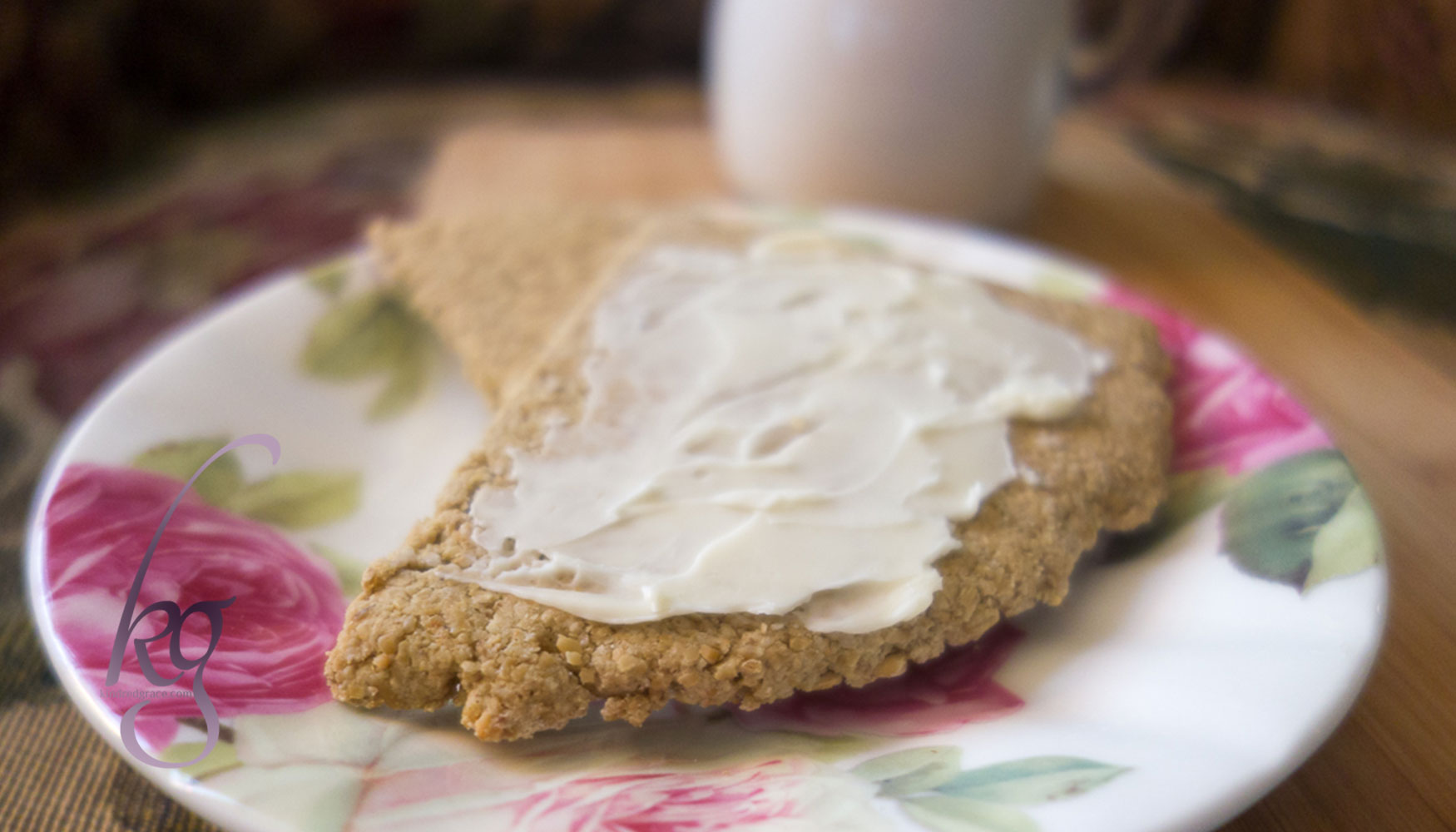
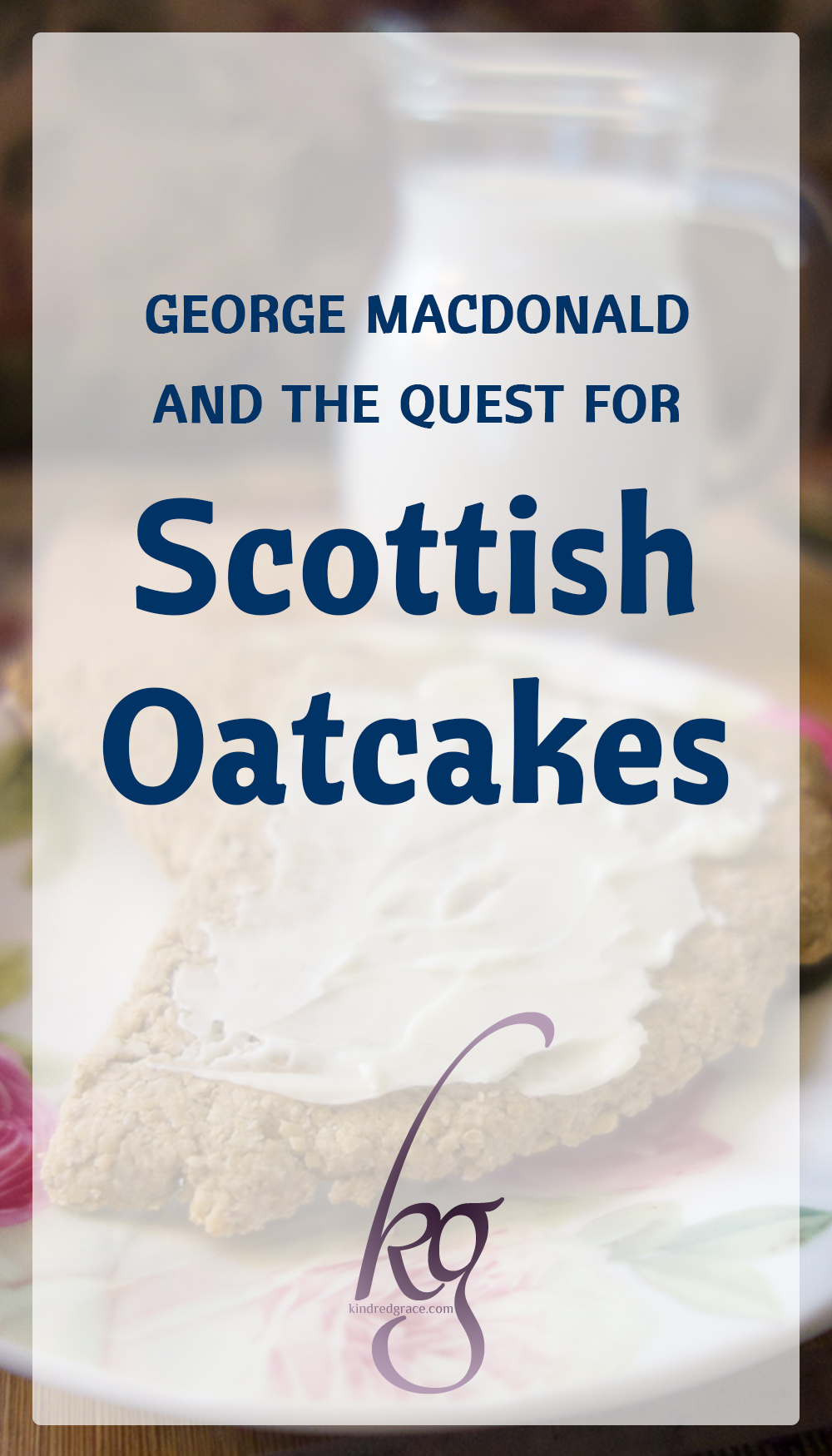
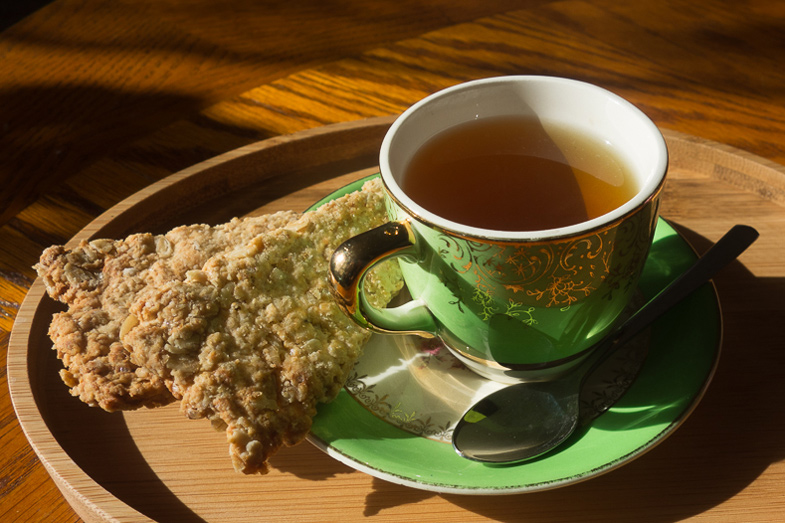
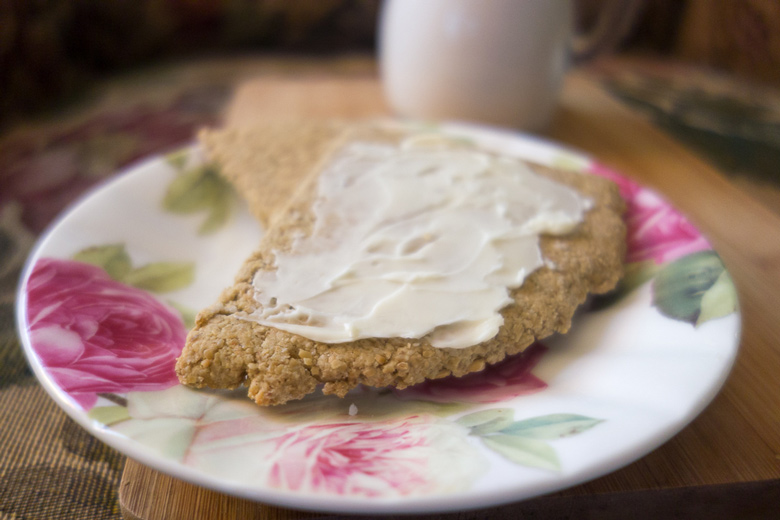
Thank you for this. I googled and found this when looking for Geo McD and oatcakes. I shared the link on a related Facebook page https://www.facebook.com/groups/GeorgeMacDonaldSociety/posts/10161536484047387/?comment_id=10161536554627387¬if_id=1705986459948933¬if_t=feedback_reaction_generic&ref=notif
and hope to keep the idea and conversation around of the flavour of hospitality alive.
What a delightful article, Elizabeth! Being 85% Scottish (with English and Welsh thrown in just to make things extra interesting) I am always eager to learn about all things in regards to my ancestry. I also am addicted to cooking and baking so I will definitely try my hand at oat-cakes!
Thank you for this fun post, Elisabeth! Now I have a new-found addiction: oat cakes with whipped cream on top!
I’ve been having fun trying each of these recipes. I’m especially grateful for the fact that they are gluten free!
I’m also spotting oatcakes in the books I’m reading now… Marilla of Green Gables references oatcakes, I discovered!
What a fun and quirky article! There’s already a “Narnian Cookbook”: someone should produce a “MacDonald’s Scotland Cookbook” (maybe Michael and I could put our heads together and you could be a consultant!)
In my new Sir Gibbie translation, there are three footnotes about food/cookery. One is MacDonald’s own, and refers to Scotland being called the “land of cakes”; another explains what “bannocks” are; and a third gives the basic ingredients of a soup dish Mr and Mrs Sclater were having when Gibbie’s friend Mistress Croale came to their door.
A small clarification: it was Donal who found oatcakes in his travel chest on his way to college, not Gibbie, though this occurs in the novel Sir Gibbie, not in Donal’s own book, Donal Grant-so that may be where the confusion has arisen (Gibbie also went to the city at about the same time as Donal, and shortly thereafter to the same college.)
Oh, thank you for the correction, David! I made the change you suggested to the original post. And the cookbook idea sounds like fun!
No worries Elisabeth! I might even be able to get hold of some of my mother’s or grandmother’s recipes if the idea gets off the ground!
Sounds delightful. Hope you’ll keep me informed!